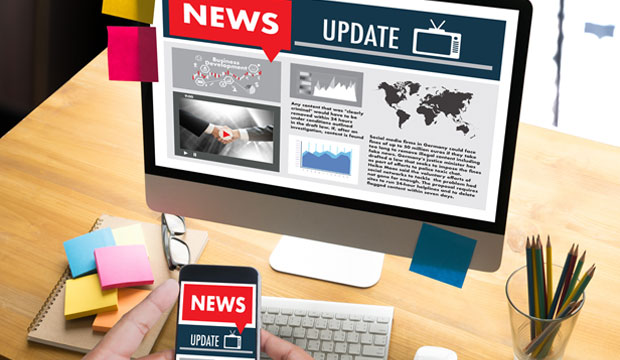5 Easy Facts About Popular News Described
Table of ContentsSee This Report on Popular NewsThe Facts About Popular News UncoveredSee This Report on Popular NewsPopular News Things To Know Before You Buy
Age is likewise an element in the way individuals check out the duty of social networks. Younger social networks information consumers are more most likely to claim it has affected their learning right. Concerning fifty percent of social networks news consumers ages 18 to 29 (48%) say information on social networks makes them better educated, contrasted with 37% of those 30 to 49, 28% of those 50 to 64, and 27% of those 65 and older.Reporters consider news worths when identifying whether or not to cover an occasion or announcement. Arguably the most important component of newsworthiness is whether or not the information item being interacted influences an information outlet's target market.
Closeness is very important. Journalists want things that impact their neighborhoods. Research study on a state's new tax code likely won't generate the exact same interest throughout state borders. Sometimes specialists can assist localize a larger national tale that affects even more than simply a city or state. In these instances, it is vital to be on the lookout for possibilities where topic specialists can provide insight or where comparable projects might be taking place in your area.
If you are publishing newsworthy research, loop in MarComm prior to the write-up being published to ensure that the pitch can emphasize the most recent aspect of the story: the publication of the study. Events and announcements that include top-level numbers are more probable to generate media protection. Gos to from nationwide numbers commonly call for months of preparation due to anticipated community rate of interest.
Popular News for Beginners
We can help alleviate potential reputational risk with these stories while additionally raising the odds of creating insurance coverage. While several of the above news worths are intertwined, human interest stories typically stand apart.
Human rate of interest components can add news worth to other tales that could seem lacking in the other worths. The uniqueness or oddity of a circumstance can assist affect whether an information outlet is most likely to cover a tale. While this is not an exhaustive listing, checking to see if your information item or event has these qualities before calling us will help you determine which components hold one of the most news value.
The research study discovers that slightly over half of all U.S. grownups sign up for information in some formand about half of those to a newspaper. And in contrast to the idea that young individuals will certainly not pay for information because details on the net is complimentary, almost 4 in 10 adults under age 35 are paying for news.
There is also considerable evidence that more consumers can start to spend for information in the futureif authors can recognize them and serve them official source well. Half of those who do not spend for information actively look for out information and look like subscribers in numerous methods. And nearly 2 in 10 of those who do not subscribe to news currently suggest they are inclined to start to pay in the future.
The 7-Minute Rule for Popular News

Individuals are drawn to news generally for two reasons above others: A need to be notified citizens (paper clients particularly are extremely encouraged by this) and due to the fact that the publication they subscribe to excels at covering specific subjects about which those subscribers specifically care - Popular News. While there are a host of factors, the No
Greater than 4 in 10 also mention the truth that buddies and family members sign up for the same item. Greater than a third of individuals claim they initially subscribed in reaction to a discount or promotion. In print, people likewise are moved heavily to subscribe to obtain vouchers that save them money, something that has untapped ramifications in resource electronic.

What Does Popular News Mean?
We asked everyone who told us they have a normal complimentary source of information just how likely they would certainly be to spend for it. Greater than a quarter (26 percent) state they would go to the very least rather likely to start paying for itand 10 percent are really or very most likely. These most likely payers often tend to be news hunters, and they also often tend to be people that currently spend for a news registration in enhancement to the resource they adhere to for free.
Of those that do pay, 54 percent register for papers in print or electronically, which stands for 29 percent of Americans generally. The majority of them get a print magazine along with their paper and spend for two to four information resources in overall, some also much more. And while 53 percent are long-time clients (5+ years), even more than a quarter (27 percent) have purchased their newspaper subscription within the past year.
